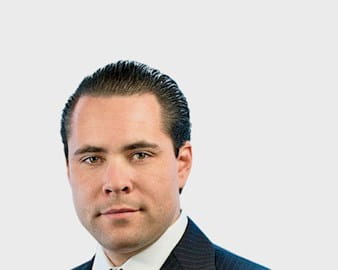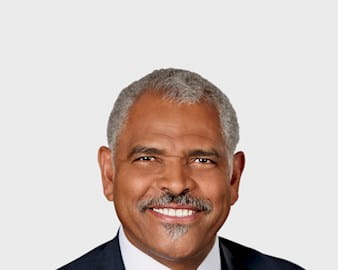
Three alumni share their approach: from purchasing an ad during the Super Bowl to partnering with select internal stakeholders.
- By
- May 01, 2017
- Strategy


The Challenge: FibraHotel (FIHO), a Mexican real estate investment trust (REIT), had good partnerships with local operators and wanted to expand its hotel portfolio with international brands. Previous negotiation attempts with international franchises and hotel operators were not successful because they weren’t willing to negotiate beyond the standard international deal terms and US hotel standards that are generally used internationally.
“We told Marriott they had more hotels in the Dallas-Fort Worth area than in all of Mexico.”
— Guillermo Bravo Escobosa
The Strategy: Guillermo Bravo Escobosa joined FIHO following the REIT’s successful initial public offering in 2012. FIHO built a reputation as a solid developer and real estate owner, and it had the capital necessary to secure strong growth in hotels in Mexico. At the same time during which FIHO wanted to grow its hotel portfolio in Mexico, it was looking for a new international partner with whom it could reach an agreement similar to those FIHO had previously negotiated with its local partners—a new international partnership that would better align incentives for both parties. FIHO wanted to find an international partner and develop a deal that was based primarily on a variable fee structure, rather than a standard top-line heavy fee structure deal. Additionally, FIHO wanted its international partner to be willing to “tropicalize” its products to the Mexican market and invest in expanding local operations teams.
FIHO began talks with several hotel operators, including Marriott International. At the time, US hotel operators had struggled to penetrate the Mexican market and had only been able to open a handful of properties in Mexico. “In the first meeting, we told Marriott they had more hotels in the Dallas–Fort Worth area than in all of Mexico, a country with more than 120 million people,” Bravo said.
Marriott and other international chains wanted greater exposure to Mexico, a country whose economy was growing quickly and had positive prospects for business in hotels. Mexico was also about to pass a series of structural reforms to incentivize further growth. Bravo said Marriott saw in FIHO a committed partner with deep local knowledge, as well as the ability to develop quality hotels and grow quickly. “We had the capital and the know-how, but we are focused on owning the assets. Their focus was on their brand and operating business, so it was a win-win,” he said.
In late 2013, Marriott and FIHO reached a deal to build and operate 20 hotels in Mexico, with FIHO able to reach an agreement similar to past agreements it had reached with its local partners, and Marriott able to quickly expand its Mexican footprint.
The Takeaway: Having a strong balance sheet, knowing their strengths, and negotiating at the right time can help firms find and build strong partnerships. These partnerships are most successful when the incentives are aligned and both parties benefit from the agreement.

The Challenge: How does a cruise company reach new customers and increase demand? Only 3 percent of North American residents have ever taken a cruise, and research shows that once people do, they want to again. While those figures offer great opportunities for growth, Arnold Donald knew how difficult it was to showcase why a cruise is a great vacation for people who’ve yet to take one.
“We knew we had to attack the myth that cruises were only for partiers or retirees.”
— Arnold Donald
The Strategy: To gain insights into consumers’ thoughts about travel, Carnival Corporation conducted the largest consumer research survey in travel industry history. The survey showed that Carnival needed new messaging and should promote itself to the broader vacation market. “We knew we had to attack the myth that cruises were only for partiers or retirees, a common misconception among travelers, by showing people what cruise vacations have to offer,” Donald said.
To do that Carnival purchased an ad during the 2015 Super Bowl and sponsored NBC’s The New Celebrity Apprentice, where the show’s finalists created ad campaigns and variety shows. Both of these efforts were aimed at dispelling common myths about cruising, such as that ships are too crowded or that there isn’t anything to do on cruise ships. Carnival took other actions too. The company created four network TV programs featuring its brands, and it worked with AT&T and Samsung in 2016 to create a virtual reality cruise for customers.
The survey Carnival conducted also showed Donald that his company needed to upgrade how it interacted with guests at all points of their vacation experience. Among many innovations, Carnival updated the customer experience onboard its ships, leading to more positive word of mouth and repeat business. It also added Cuba to its list of global destinations by opening cruise travel from the United States, the first voyage to the country led by an American cruise company in decades. In addition to adding new ports of call, Carnival unveiled Ocean Medallion, a first-of-its-kind wearable device that enables a personal concierge.
The Takeaway: Innovation isn’t always about building a new product. Sometimes you have to improve your guests’ experiences by changing how your brand interacts with customers and by reaching customers in new ways and exceeding their expectations.

The Challenge: When Marriott International hired Anka Twum-Baah in 2015, it wanted to drive more localized marketing in Asia Pacific through personalized offerings and experiences leveraging its award-winning global loyalty program. While Marriott Rewards had strong customer awareness in the West, awareness in Asia Pacific was relatively low. “In Asia the program had lower awareness among leisure travelers, millennials, and families—all groups that were rapidly growing and could position the program well for the future,” Twum-Baah said.
“In Asia the program had lower awareness among leisure travelers, millennials, and families—all groups that were rapidly growing.”
— Anka Twum-Baah
The Strategy: Twum-Baah took a multidisciplinary approach to changes, both digging into historical performance of KPIs and seeking customer feedback to add color to the data. This approach gave her a strong business case and a firm hypothesis to solve the challenge, allowing her to develop a more comprehensive strategy.
This refined approach drove changes to marketing and messaging and affected how continent teams amplified the value proposition for Marriott Rewards members. For example, customers wanted more localized communication across accessible channels, so Twum-Baah increased digital outreach, leveraging popular China-based social media hub WeChat and microblogging website Weibo. Through these channels, current members and prospective customers were able to learn more about hotel brands and key destinations through localized content that highlighted the value of being a loyalty member. Customers were also able to use these channels as a one-stop platform for travel planning and booking. Within a few months these channels grew in subscribers by more than 150 percent and began to outpace regional competitors in activity and conversion.
Based on customer feedback, there was a need for more experiential offerings as part of the loyalty program, as a means to engage guests beyond hotel stays. Twum-Baah supplemented Marriott’s current partnership roster to include Alibaba, Hong Kong Rugby 7s, Shanghai Tang, Korean Airlines, and Jo Malone, to name a few. By the end of the first year, Marriott International was the first global hospitality company to launch Alipay (Alibaba’s payment platform) in more than 80 hotels with nearly one million transactions in the initial phase.
Successfully driving this strategy required making internal changes and forging new relationships. Twum-Baah partnered with internal stakeholders working in operations, digital, development, finance, and technology offices. The effects of these changes are ongoing but have resulted in new ways of looking at the customer experience, both at hotel properties and outside of hotel stays.
The Takeaway: Analytics helps to build a business case, but so too does getting input from customers and harnessing internal expertise when developing a holistic plan for change. The idea of challenging everything encourages objective strategic planning and more-creative thinking.